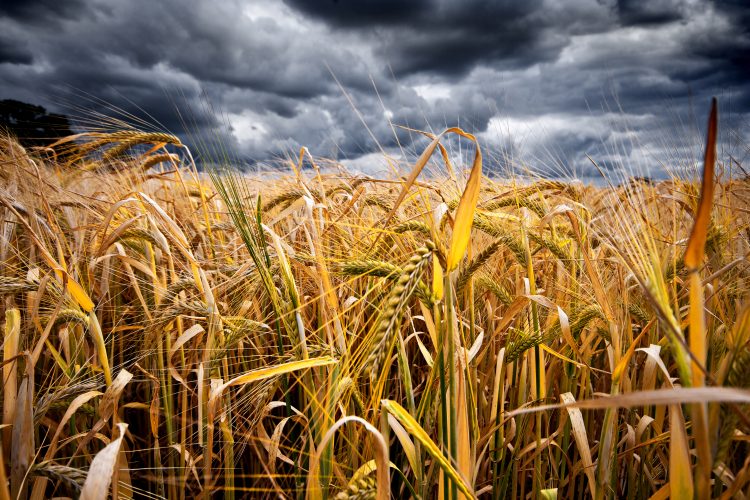Extreme weather poses threat to wheat crops in US and China
- Like
- Digg
- Del
- Tumblr
- VKontakte
- Buffer
- Love This
- Odnoklassniki
- Meneame
- Blogger
- Amazon
- Yahoo Mail
- Gmail
- AOL
- Newsvine
- HackerNews
- Evernote
- MySpace
- Mail.ru
- Viadeo
- Line
- Comments
- Yummly
- SMS
- Viber
- Telegram
- Subscribe
- Skype
- Facebook Messenger
- Kakao
- LiveJournal
- Yammer
- Edgar
- Fintel
- Mix
- Instapaper
- Copy Link
Posted: 6 June 2023 | Grace Galler | No comments yet
According to a study, wheat-producing areas in the US and China are threatened by the increasingly likelihood of extreme weather.


New research has revealed that the likelihood of extreme weather in wheat-producing areas of the US and China has “increased significantly”, with researchers stating crops may be threatened by “unprecedented heat and drought”.
The research was carried out by the Friedman School of Nutrition Science and Policy at Tufts University and has been published in npj Climate and Atmospheric Science.
The study group observed that the world is getting hotter thus causing shifts in seasonal patterns and increasing the amount of extreme weather such as severe droughts and heat waves. They noted that this can affect crop yields and food supplies.
The findings predict heat waves that once occurred approximately once every 100 years in 1981 are now likely to happen once every six years in the Midwestern US and once every 16 years in North-eastern China.
Researchers state that their work shows the range of conditions “that people need to prepare for, even if they haven’t occurred yet”.
“The historical record is no longer a good representation of what we can expect for the future,” said Erin Coughlan de Perez, CBF Professor at the Friedman School Dignitas Associate Professor at the Friedman School and Lead Author on the paper.
“We live in a changed climate and people are underestimating current day possibilities for extreme events.”
With the average global surface temperature being 1.1 degrees Celsius higher than it was between 1850 and 1900, according to the most recent report from the Intergovernmental Panel on Climate Change, Coughlan de Perez and her colleagues set out to decipher how this change has altered risks of extreme weather.
The team collected a large group of seasonal forecasts from the past 40 years which was then used to generate thousands of possible variations in temperature and rainfall. With this method, known as the Unprecedented Simulated Extreme Ensemble or UNSEEN approach, the researchers estimated the likely frequency of extreme temperatures that exceed critical growth thresholds for wheat.
According to the authors, winter wheat crops start their growth in autumn and are harvested the following summer, meaning that high temperatures in spring (when the plant is flowering) can affect the wheat’s development.
“At temperatures over 27.8 degrees Celsius the plants start to suffer from heat stress. At temperatures over 32.8 degrees Celsius, important enzymes in the wheat start to break down,” explained the research team.
“In the Midwest, we used to have seasons where you’d see an average of maybe four or five days of that enzyme breakdown threshold being exceeded—it was pretty uncommon,” said Coughlan de Perez. “But our research showed possible alternative realities of today’s climate that generated 15 days above this threshold, which we surmise would be very damaging.”
Coughlan de Perez went on to note that “record-breaking heat also tends to be associated with record-breaking drought”, before stating that “the combination of these two hazards could severely impact the growing season”.
“Both the US and China are considered global breadbaskets – areas that produce significant amounts of the world’s grains. If these crops were to fail simultaneously, or at the same time as other staple crops, it could have serious impacts on the price and availability of food around the world.”
Going forward, the lead author of the study suggested that the results could be used to inform climate adaptation plans in both the US and China and ensure that stakeholders are able to prepare for future extreme weather events.
“I think, with climate change, we’re suffering from a failure of imagination. If we’re not imagining the kinds of extremes that could happen, then we won’t prepare for them,” Coughlan de Perez said. “We don’t have to be surprised. We can use tools at our disposal to try to understand what’s possible and be ready when it happens.”
Related topics
Environment, Food Security, Research & development, Supply chain, Sustainability, World Food
Related organisations
Friedman School of Nutrition Science and Policy, Tufts University









